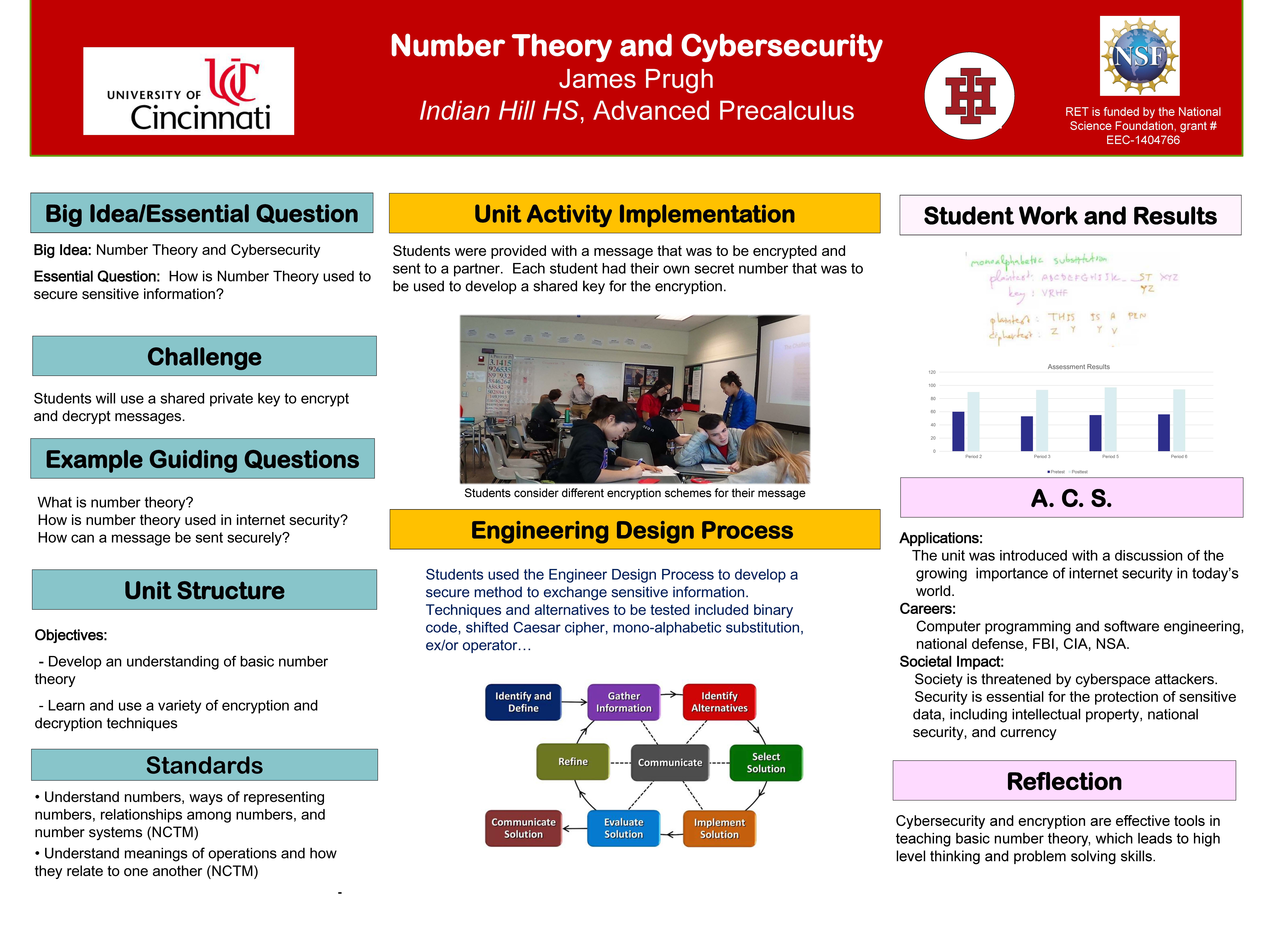Research Experience for Teachers (2016-2017)
Number Theory and Internet Security
 |
||||||
|
||||||
|
Pre/Post Test: Pre-Test Post-Test |
||||||
Keywords:
|
|
The Big Idea (including global relevance) The importance of number theory in internet security. |
|
Essential Questions How is number theory applied in internet encryption? |
|
The Hook For the Hook, Students are shown a 10-minute clip on the Enigma Machine, and a discussion follows that addresses the following questions:
|
|
The Challenge Students will design a secure method to exchange a message. |
|
Guiding Questions
|
ACS (Real world applications; career connections; societal impact)
Threats to internet security are prevalent on our everyday lives.
The unit is introduced with a 4-minute clip about Stuxnet and the hacking of the Iranian nuclear facilities. Activity 4 is designed to teach students the value using encryption to secure sensitive information. The unit closes with a clip on ethics in encryption and a reading and quiz over ethical issues surrounding internet security.
Mathematician, systems analyst, computer programmer, law enforcement (FBI, NSA, CIA). Arrangements will be made to bring a speaker to class to share internet security and law enforcement.
Misconceptions
- A calculator is necessary for difficult computations.
- Most of the information sent across the internet is secure.
- It is impossible to securely send a message.
- The mathematics behind encryption is very complicated.
Unit Lessons and Activities
- Lesson 1: Introduce number theory
Lesson 1 will focus on giving students an understanding of what number theory is as well as the importance of internet security. Students will investigate algorithms and number theory.- Activity 1: Introduce the big idea – Number Theory in Internet Security. Lesson begins with a video about Stuxnet, followed by a discussion of the implications. Students will generate their own challenge that will address the essential question. This is followed with a lesson on basic number theory. - 1 90 minute block
- Activity 2: Investigate algorithms (Long division, Fermat’s Little Theorem with primes, Babylonian algorithm for square roots, Euclid’s theorem for divisors, The phi function) - 1 90 minute block
- Lesson 2:Encryption
Lesson 2 will focus on giving students an understanding of modular arithmetic, along with an exploration of the Diffie-Hellman algorithm as well as gaining an understanding of encryption. Students will send encrypted messages to one another.- Activity 3: Teach modular arithmetic using an activity that involves the Diffie-Hellman algorithm. - 2 50 min periods
- Activity 4: Encryption activity - 2 block periods. The RSA lesson will take 1 regular class day
- Evidence of CBL: lessons 1 through 4, activities 1 through 4
- Evidence of EDP: lesson 4, activity 4
Additional Resources
- https://www.youtube.com/watch?v=M7kEpw1tn50
- https://www.youtube.com/watch?v=w0ZQvZLx2KA
- https://www.youtube.com/watch?v=XPMzosLWGHo
- https://www.youtube.com/watch?v=GKTexzwFpck
- http://wstein.org/ent/ent.pdf
- http://www.slate.com/articles/health_and_science/science/2013/06/online_credit_card_security_the_rsa_algorithm_prime_numbers_and_pierre_fermat.html
- http://www.ijarcsse.com/docs/papers/Volume_3/7_July2013/V3I6-0638.pdf
